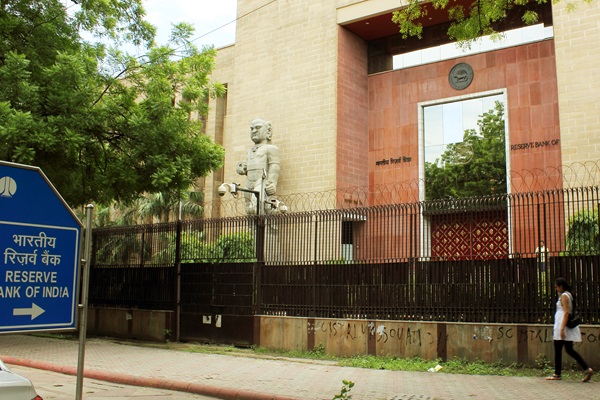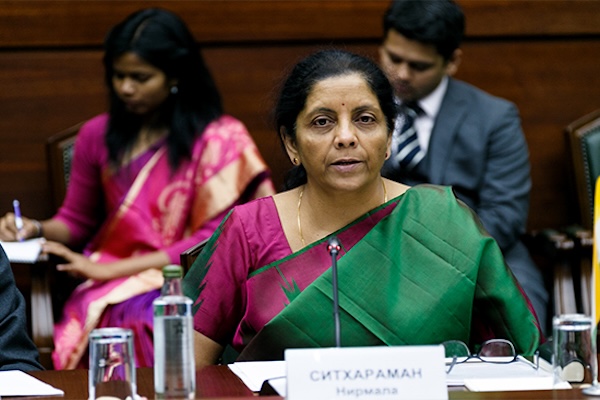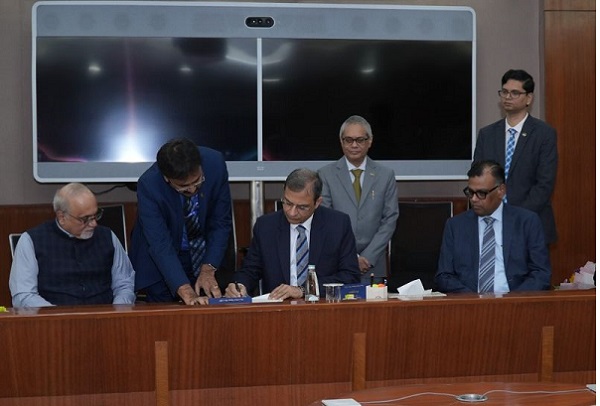.png)
Sujit Kumar is Chief Economist at National Bank for Financing Infrastructure and Development, Mumbai. Rajendra Paramanik is Assistant Professor at Indian Institute of Technology, Patna.
June 9, 2025 at 12:33 PM IST
In the second bi-monthly meeting of the Monetary Policy Committee in the financial year 2025-26, the Reserve Bank of India went all-in on growth as inflation is seen staying below the target 4% level during the year while GDP growth is seen below potential.
While market participants expected the RBI to continue the accommodative path, the size of the rate cut, and policy stance reversal caught many by surprise.
The MPC decision was a 5:1 verdict with one member, Saugata Bhattacharya, calling for a modest 25-basis-point cut in the repo rate. This is a first split verdict under governor, Sanjay Malhotra. It will be interesting to look at minutes of MPC meet to know rationale behind dissent. Clearly, a 50-bps cut in the policy repo rate coupled with a 100 basis points cut in the cash reserve ratio timed with festive season demand for liquidity places the onus on banks to lend cheaper.
However, a change in policy stance to "neutral" in the June review right after it had turned "accommodative" in April could be seen as an exercise in ambiguity, whereas the aim could be curbing speculation of further easing of rates. Essentially, it could be a message to borrowers to stop deferring borrowing plans on the hope of lower financing, going forward. We will get more colour on change of stance, too, when minutes of MPC become available.
At ₹2 trillion average in April-May 2025, the system liquidity surplus is approaching 1% of net demand and time liabilities of the banking industry and is likely to rise to 2% of NDTL as government spends back the RBI surplus into the system while credit offtake is muted.
The CRR cut will take effect in September 2025 and could keep the liquidity surplus in the second half of the year, when business activity picks up seasonally. The excess liquidity could make overnight money market rates settle closer to the standing deposit facility, making the floor of the liquidity adjustment facility the effective policy rate, going forward.
The CRR cut also eases pressure on banks to chase high-cost deposits in the interim.
Banks, however, will remain in a bind as the external benchmark lending rate will reflect the repo cuts sooner while deposit repricing will happen with a lag. The RBI data shows EBLR-linked loans account for 60.6% of the banking system floating loans as of December 2024, with private banks reporting an EBLR share of more than 80%, exposing them to repricing risks in the near term.
A 100-bps lowering of CRR makes the actual cost of raising deposits cheaper by up to 30 basis points for banks. However, it will be effective on deposits raised in October-March, that too on the fresh flow of deposits, while loan repricing happens now and covers the outstanding stock as well as the flow of loans. The lenders will therefore see erosion in interest margins in the interim, affecting their profitability. There is limited support likely from treasury books too as new investment norms effective April 2024 restrict change in classification of securities as well as appropriation of gains to the profit and loss account.
Dissent
While the central bank has undertaken several measures to enhance monetary transmission in India, including deregulation of bank lending and deposit rates and changing the methodology to set lending rates, there remain many structural infirmities, especially with banks with different cost structures having similar lending rates to remain competitive in the market. Clearly, the lived experience so far leaves a lot to be desired on institutional credibility and monetary policy efficacy. It is not a surprise that studies have found little to no effect on supporting growth by interest rate changes, recently.
Economists have pitched the idea of the central bank’s autonomy and independence for very long and governments too have been heeding to it, albeit with caution. Central banks of New Zealand, Japan, the United States and the European Central Bank established a clear mandate for their monetary policy committees with diverse members.
Different RBI governors too made significant efforts in constructing a similar committee to deliberate and decide on the monetary policy in India since the 1990s. Finally, in 2016 India had an MPC team of six members that has prioritised the dual objectives of taming inflation and promoting economic growth.
The unprecedented events like demonetisation, the pandemic and wars posed significant challenges for the MPC to walk the tightrope to strike a balance between inflation and growth. However, inflation being stubbornly higher than the targeted level of RBI for the most part of the last decade, has played the prima donna.
This has homogenised the opinion of members in MPC meetings to some extent, and it is evident from their unanimity of voting stances in most meetings. However, some members have expressed their differing views either implicitly in their minutes of meetings or explicitly in terms of a dissent vote on the repo rate, the paramount policy tool for RBI. Previously, members like Ashima Goyal and Jayanth Verma have provided the contrarian view, and it is heartening to witness the continuation of this trend in the newly constituted MPC members too, with three out of five meetings since October 2024 having a dissenter or two.
Discordance and diversity of opinion are very critical in monetary policy communication.
Erstwhile Delphi method of deliberation underscores the strength of dissent and literature of central banks’ communiqués also highlights the importance of the dissent vote in decision making. It is also observed in the Indian context, every time a dissenter provides more nuanced and diverse perspective in his or her minutes of the meeting of MPC.
Empirical findings from many central banks also support the greater forecast accuracy of dissenters for inflation as well as growth figures. Contrary to popular perception that dissent signals chaos to the market, there is an emerging literature where the constructive role of dissent amongst MPC members regarding market signal is observed (Sil et al. & Banerjee et al.).
Having seen the bold move from the MPC on both rates and stance, one wonders if dissent is being constructively absorbed into policy deliberation, or is it being overridden too easily in the drive for headline-making moves? The governor, Sanjay Malhotra, will do well to pay heed to the voices of dissent as it offers an alternative and nuanced perspective for the economy. Policy surprises make a potent tool in the arsenal of central banking, but are effective when used sparingly.
*Views are personal




